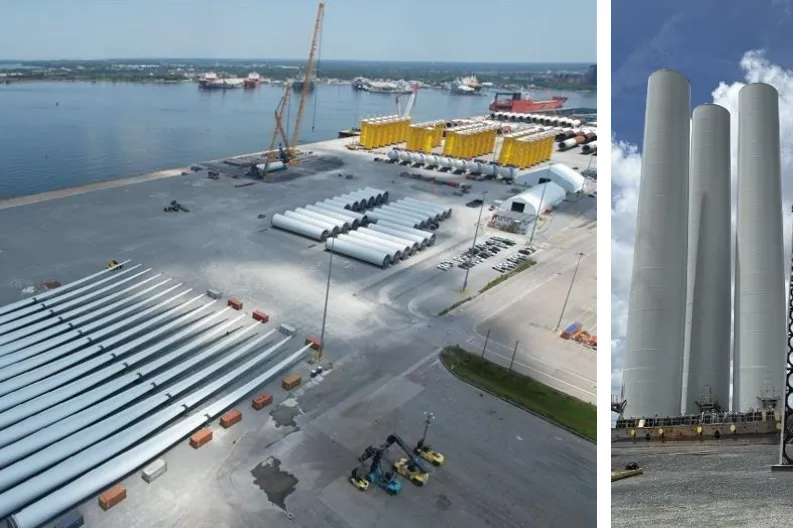US largest offshore wind array maintains blistering pace despite Trump tariff hit
Dominion Energy's 2.6GW CVOW array on track for completion next year as costs spiral

Dominion Energy is maintaining its blistering construction pace on its Coastal Virginia Offshore Wind (CVOW) array on track for completion next year as tariffs spike overall costs.
The 2.6GW project – the nation’s largest – “is now 60% complete, just months away from first delivery of electricity to customers in early 2026 and still on schedule for full completion at the end of 2026,” CEO Bob Blue said on Friday’s second quarter earnings call.
“It represents the fastest and most economical way to deliver almost three gigawatts of electricity to Virginia's grid, to support America's AI and cyber preeminence in the largest data center market in the world,” Blue added.
CVOW stands out among its US peers for avoiding much of the post-2022 inflation that scuttled most projects by signing supplier contracts in 2021.
An almost complete reliance on components imported from Europe, however, now exposes it to President Donald Trump’s 15% tariffs that will raise total costs to $10.9bn.
“We estimate that the total impact of tariffs as they exist today through project completion at the end of 2026 would be $506m,” Blue said.
If tariffs were to increase another 5% on Europe or Mexico, this could raise incremental costs another $134m, Blue added.
PJM is expected to further add to these costs, but Blue said Dominion doesn’t expect “any change in assigned costs of the magnitude of the update we received in February.”
Despite the escalations, the project remains the nation’s cheapest, coming in at around $4,100/kW, in line with global standards and far below its peers.
Tariff impacts will add $0.03 to ratepayers' monthly bills over the lifetime of the project. It maintains a levelised cost of energy of $63/MWh (including renewable energy credits (RECs)), benchmarking “very favourably with new generation alternatives, including solar, battery and gas fired generation,” Blue added.
Installation record
Installation has made “consistent and noteworthy progress across all aspects of the project,” Blue said.
Marine contractor, Belgium’s Deme, has installed 134 monopiles, 76% of the total 176, and set a US record in July with 26 driven.
Key to the rapid pace has been management of Jones Act restrictions that prevent foreign-flagged vessels from making consecutive stops at US ports or points on the outer continental shelf.
“This resulted in a significantly lower risk installation process, which is now translated into a meaningfully positive impact on our monopile installation schedule” that exceeds its American peers.
Blue highlighted bipartisan support for the project in Virginia, a critical factor amid Trump’s war on the sector and its ongoing litigation.
Dominion’s service territory includes northern Virginia’s data centre zone, the largest such hub in the world.
PJM expects power demand to rise some 6% annually through the end of the decade, and Dominion reports that “nine of our top 10 all-time peak days in Virginia have occurred this year, including six in the last six weeks.”
CVOW “remains consistent with the goal of securing American energy dominance, and is part of our comprehensive all of the above strategy to affordably meet growing energy needs,” Blue said.
(Copyright)